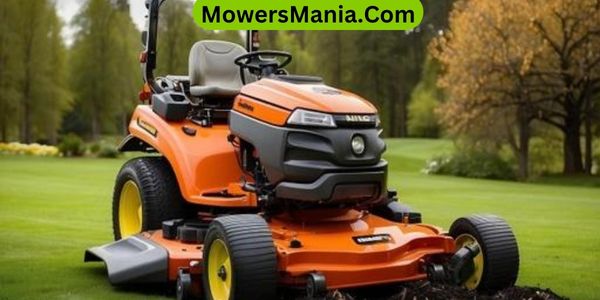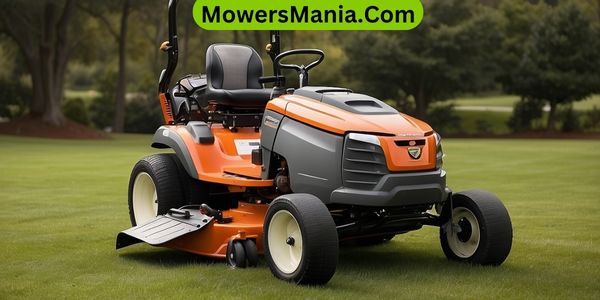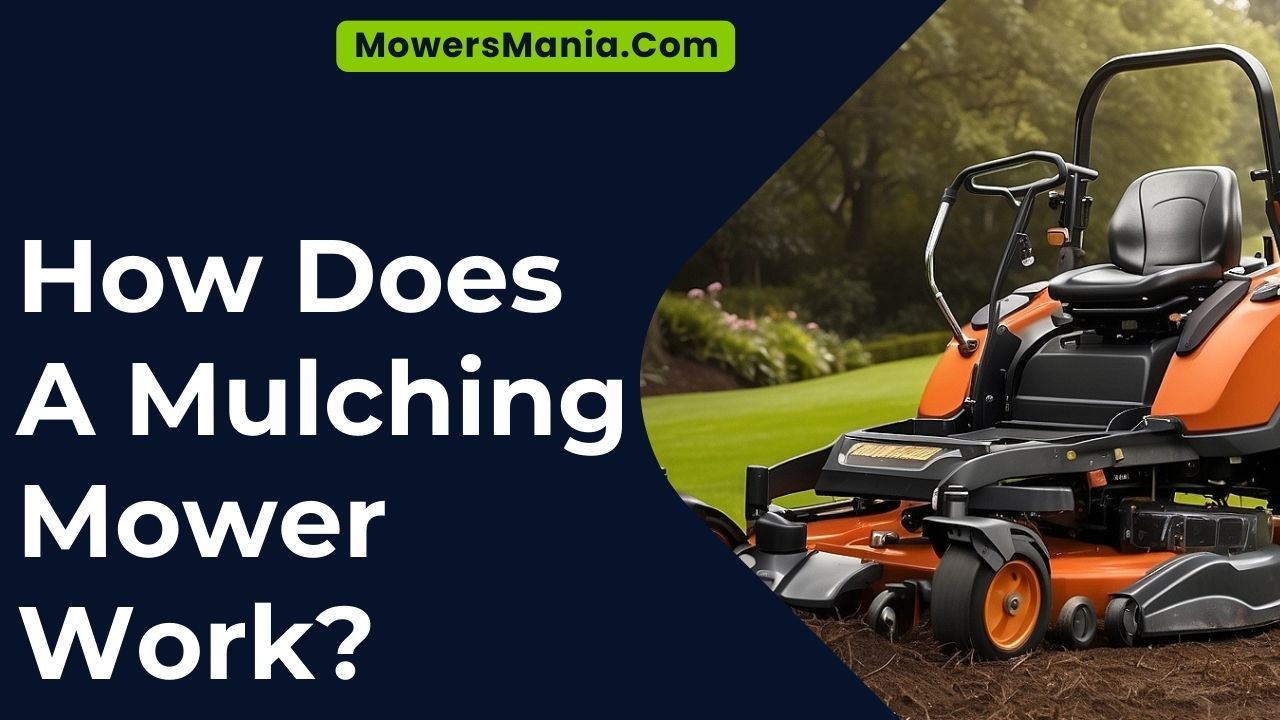Do you wonder how a mulching mower works? It’s simple: the mower’s unique design cuts grass into small pieces and deposits them back onto the lawn.

This process helps nourish your lawn, reduces the need for fertilizers, and promotes a healthier, greener yard.
Learn more about the benefits and maintenance of mulching mowers in this article.
Mulching Mower Basics
To mulch effectively, you need to understand how a mulching mower cuts and recycles grass clippings.
Unlike traditional mowers that collect and bag clippings, a mulching mower is designed to finely chop the grass and then disperse it back onto the lawn. This process is achieved through a specialized blade and deck configuration.
As you mow, the mower’s blades rotate at high speeds, cutting the grass into tiny pieces. The deck of the mower is designed to keep the clippings circulating underneath it until they’re cut multiple times into smaller fragments. These tiny clippings are then evenly spread across the lawn.
The key to successful mulching lies in the mower’s ability to cut the grass finely enough that the clippings break down quickly and return nutrients to the soil without creating clumps or thatch.
By allowing the clippings to decompose on the lawn, the mulching mower helps to promote a healthier, greener lawn while reducing the need for additional fertilizers.
Understanding the basic mechanics of a mulching mower is essential for achieving optimal results and maintaining a lush, well-nourished lawn.
The Cutting Process

One important aspect to understand about the cutting process of a mulching mower is how it uses its specialized blade and deck configuration to finely chop the grass and disperse it back onto the lawn.
This process is key to achieving the benefits of mulching, such as promoting a healthier lawn and reducing the need for external fertilizers.
Here’s how the cutting process of a mulching mower works:
- Efficient Cutting: The sharp, high-lift blades of a mulching mower are designed to lift the grass before cutting it, ensuring a clean and even cut.
- Fine Mulching: The deck of the mower is designed to create a swirling airflow, keeping the grass clippings airborne for longer. This allows the blades to make multiple cuts, further reducing the clippings into fine pieces.
- Even Dispersion: Once the grass is finely chopped, the mower’s deck is designed to evenly disperse the clippings back onto the lawn, providing natural nutrients as they decompose.
- Enhanced Nutrient Recycling: By returning the finely chopped clippings to the lawn, the mulching mower helps in recycling essential nutrients, promoting a greener and healthier lawn.
Benefits of Mulching
Maximize the health and appearance of your lawn by understanding the significant benefits of mulching with a specialized mower.
One of the key advantages of mulching is that it returns essential nutrients to the soil. As the grass clippings are finely cut and distributed back onto the lawn, they decompose quickly, providing the soil with nitrogen, phosphorus, and potassium, which are vital for the healthy growth of your grass.
This natural fertilization process reduces the need for additional chemical fertilizers, promoting a more sustainable and eco-friendly lawn care approach.
Mulching also helps to conserve moisture in the soil. The layer of mulched grass clippings acts as a protective barrier, reducing water evaporation and helping the soil retain moisture for longer periods.
This can be particularly beneficial during hot and dry weather conditions, as it helps to keep the grass roots hydrated and healthy.
Furthermore, mulching encourages the development of a thicker and lusher lawn. As the mulched clippings break down, they add organic matter to the soil, improving its structure and creating a better environment for the growth of grass roots.
This results in a denser and more resilient lawn that’s better equipped to withstand foot traffic, pests, and environmental stressors.
How Mulching Affects Soil?

As you continue mulching with a specialized mower, the decomposition of grass clippings returns essential nutrients to the soil, significantly impacting its fertility and overall health.
This process has several important effects on the soil:
Maintenance and Tips
To maintain the effectiveness of your mulching mower, regularly clean the underside of the deck to prevent grass buildup and maintain optimal mulching performance.
Grass clippings can accumulate on the underside of the deck, leading to reduced airflow and mulching efficiency.
Additionally, it’s crucial to sharpen the mower blades at least once a year to ensure clean cuts and efficient mulching. Dull blades can tear the grass instead of cutting it, leading to uneven mulching and potential thatch buildup.
Furthermore, keep an eye on the mower’s engine air filter and spark plug, replacing them as needed to maintain the mower’s performance.
| Maintenance Tips | Frequency | Importance |
|---|---|---|
| Clean deck underside | After each use | High |
| Sharpen mower blades | Annually | High |
| Check air filter | Regularly | Medium |
Regular maintenance not only ensures the optimal performance of your mulching mower but also prolongs its lifespan, saving you money in the long run.
By following these maintenance tips, you can enjoy consistently excellent mulching results and a healthy lawn.
Frequently Asked Questions (FAQs)
Can a Mulching Mower Be Used on Wet Grass?
Yes, you can use a mulching mower on wet grass, but it’s best to avoid it if possible. Wet grass can clump, clog the mower, and result in an uneven cut. Consider waiting for the grass to dry for better results.
What Type of Grass Is Best Suited for Mulching Mowers?
For your mulching mower, the best grass is fine fescue, zoysia, or Bermuda grass. These types are ideal because they grow slowly and produce fine clippings, allowing your mower to efficiently mulch and return nutrients to the soil.
Does Using a Mulching Mower Require a Different Mowing Pattern Than a Regular Mower?
Using a mulching mower doesn’t require a different mowing pattern than a regular mower. You can maintain your usual mowing pattern, but make sure the grass isn’t too long to allow effective mulching.
Are There Any Safety Precautions to Take When Using a Mulching Mower?
When using a mulching mower, watch out for debris while mowing. Wear closed-toe shoes and long pants to protect against flying objects. Clear the yard of rocks and branches to prevent damage to the mower.
Can a Mulching Mower Be Used on Uneven or Hilly Terrain?
Yes, you can use a mulching mower on uneven or hilly terrain. It’s important to adjust the mower’s height to accommodate the variations in the landscape. Be sure to follow the manufacturer’s guidelines for safe operation.
Conclusion
So, now you know how a mulching mower works. It cuts grass into tiny pieces and returns them to the lawn, providing nutrients and moisture to the soil.
Mulching also reduces the need for fertilizers and helps prevent weed growth.
Remember to regularly maintain your mulching mower for optimal performance, and follow these tips to achieve a healthy, lush lawn.
Happy mulching!



